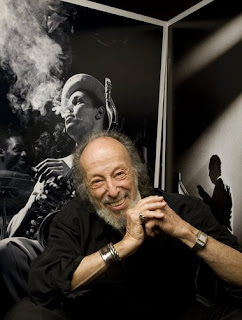 Bye-bye, Andy Warhol. Sayonara, Jun Kaneko. Farewell, Richmond Barthé and Helene Fielder.
Bye-bye, Andy Warhol. Sayonara, Jun Kaneko. Farewell, Richmond Barthé and Helene Fielder.
The Ohr-O’Keefe Museum of Art (www.georgeohr.org) set the bar awfully high with its opening exhibits, which until recently occupied the galleries since the grand opening of Phase I of the $35 million museum in November 2010: prints by Pop artist Andy Warhol; enormous ceramic heads by Kaneko; sculptures by Barthé, a native of Bay St. Louis, Miss.; and abstract ceramic artwork by Mississippi artist Helene Fielder.
Seven months and more than 16,000 visitors later, the museum took those exhibits down and packed them for shipping. Thus began the process of bringing three compelling new exhibits to the museum. (See information box.)
“Above All, Enjoy the Music: Jazz Photography by Herman Leonard” will remain on view through Nov. 27 in the Beau Rivage Resort & Casino Gallery/Gallery of African-American Art. The show features 40 images by Leonard, whose photographs include jazz icons like Miles Davis, Duke Ellington, Louis Armstrong, Billie Holiday and many more.
Edgy and provocative describe the work of “William Dunlap: Look At It . . . Think About It,” which will be up through Dec. 4 in the IP Casino Resort Spa Exhibitions Gallery. “Brian Nettles: Design in Three Dimensions,” will be on exhibit through Nov. 27 in the Mississippi Sound Welcome Center, a space dedicated to artwork by Mississippi artists.
Nettles’ ceramic art “is influenced by nature’s shapes, forms, textures and rich organic colors,” according to OOMA press material. “From his 28 acres in Pass Christian, Miss., along the banks of the winding Wolf River, the nearby bayous, creeks and cypress swamps provide inspiration for his pottery.”
Brian Nettles is a native of Ocean Springs, Miss., and during the late 1990s he was studio director of ceramics at the old Ohr-O’Keefe Museum of Art in Biloxi. He worked with design architect Frank Gehry on plans for the ceramics studio for the newly opened museum.
the Star Gallery/Gallery of African-American Art. The saga of emancipated slave Pleasant Reed can be found in the Pleasant Reed Interpretive Center.
The George E. Ohr exhibition still occupies
An opening reception and birthday party for George E. Ohr and Jerry O’Keefe will be from 5:30 until 7:30 p.m. July 15 at the museum.
Leonard (1923-2010) was a respected photographer and lifelong jazz aficionado who created an impressive and voluminous collection of the world in which he moved.
“The exhibition honors jazz as an American art form with roots that began in the African-American community of New Orleans in the 1890s and exploded on the New York club scene in the 1940s,” according to a museum news release.
Barbara Ross, curator of collections for the Ohr-O’Keefe Museum of Art, first saw Leonard’s work at the Gallery for Fine Photography in New Orleans. She later met him briefly 11 years ago in Baton Rouge, where he autographed her copy of his book, “Jazz Memories.”
“I just had a dream to have an exhibit of his work here for quite a while,” Ross says.
Only one of the 40 images here is not black-and-white. Most of Leonard’s 16-by-20 portraits are not posed, and they capture the human qualities of the musicians, according to Ross. The photographer was renowned for his distinctive style that feature moody back-lighting and plumes of cigarette smoke,
One of his favorite subjects was the enigmatic and photogenic Miles Davis. There are four images of Davis in this collection, Ross says. One is a huge image of his face at Montreux, which she describes as “rather spooky but eerily beautiful.” Two photographs show Davis in Malibu, Calif., where the musician/artist is shown drawing.
Other jazz greats shown here are the brilliant but haunted trumpeter/vocalist Chet Baker and the great tenor sax-man (and Oscar-nominated actor) Dexter Gordon, whose image — used for one of Gordon’s most popular albums —can be seen in the background of Douglas Kirkland’s photo of Herman Leonard.
The exhibit includes photographs of two contemporary musicians from New Orleans: Irvin Mayfield, the thirtysomething cultural ambassador for New Orleans and the state of Louisiana, shown head bowed, holding his trumpet; and 25-year-old Troy Andrews, known as “Trombone Shorty.”
Leonard, a native of Allentown, Pa., began showing an interest in photography at age 11 and attended Ohio University before leaving college to join the Army in World War II, according to a monograph on the exhibit. After the war he earned his bachelor’s degree. He studied under Canadian portrait artist Yousuf Karsh and assisted his mentor in shoots with Albert Einstein, Clark Gable and Harry S. Truman.
In the 1950s, Leonard was personal photographer to Marlon Brando, moved to Paris to work in advertising and fashion, and was featured in Time, Life and Playboy magazines; after two decades in Europe he returned to the United States and began printing his jazz negatives.
